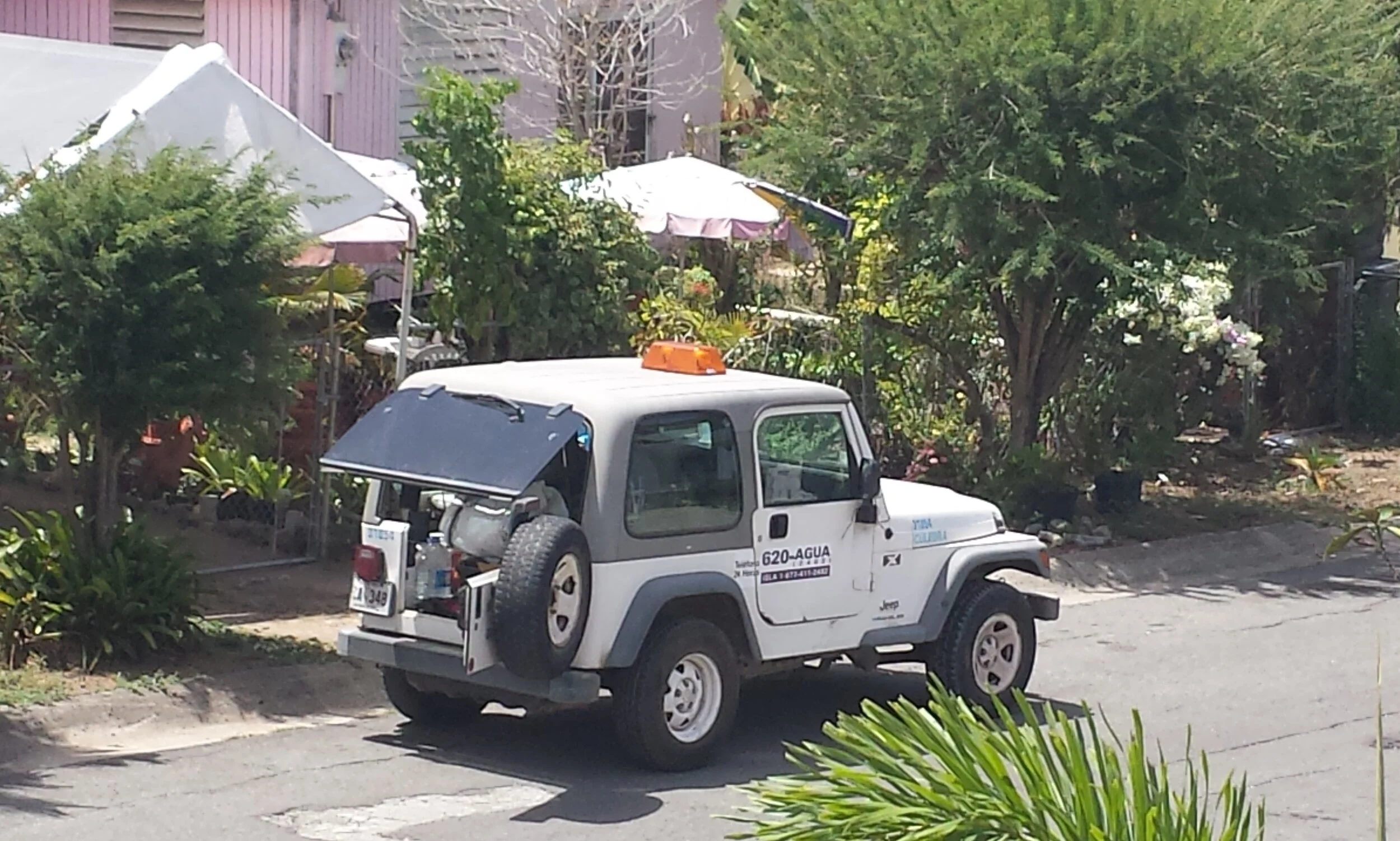4 Ways to Drive Operational Efficiencies: Vehicles & Water Service During the Pandemic
By Stacey Isaac Berahzer
Staff from Puerto Rico Aqueduct and Sewer Authority (“PRASA”) work on water infrastructure on the island of Vieques, PR. Photo taken by Stacey Isaac Berahzer, June 2015.
Operating efficiently is the first line of defense against steep rate increases and water affordability issues. However, a pandemic requires physical distancing, and this can be a challenge for water utilities sending crews out to fix water infrastructure. Under normal circumstances, “efficiency” may mean that a small crew reports to the work site in the same vehicle. With the pandemic, utilities have had to become creative in order to keep their workers safe by putting them in separate vehicles. Finding inexpensive ways to do that is crucial. This is especially true in cases where the utility has forgone its planned rate increase, or is facing revenue shortfalls due to declines in sales from commercial and industrial customers. This post shares some innovative ways that several utilities have reported keeping their costs down with respect to vehicles.
Replacing a residential meter. Staff from PRASA on the island of Vieques, PR. Photo taken by Stacey Isaac Berahzer, June 2015.
Through various webinars and direct communication, utilities have shared the following tips on how they have managed the physical distancing when it comes to crews and vehicles:
Using fleets from other departments that have reduced activities: While water service needs to stay on during a pandemic, some other activities in the local government may be less critical and may see reduced need for their fleet. A large urban utility in Georgia has repurposed some passenger vehicles to have water crew members in separate vehicles that follow each other, instead of putting more than one employee in the same vehicle.
Reimbursing for use of employee’s personal vehicles: A very small water utility in Arizona shared that they provide “reimbursement of $0.50 [per] mile (lower than federal guidelines) to use [employees] own vehicle.” Another large utility outside of the Atlanta metro area in Georgia has also been asking employees to use their personal vehicles and reimbursing them for the miles driven.
Employees taking utility vehicles home: In some cases, the reverse is true, where the water department allows the employee to use some of its fleet as “take-home” vehicles. In terms of which employees qualify for this, one large utility in the Southwest offers a take-home vehicle if the employee lives within 2 miles of the city. Some level of accountability comes with this practice though. The employee is responsible for charging any relevant equipment at their house. They are also required to take pictures of locks, where the vehicle is parked, etc. The employee then comes back to the plant sometime during the day to pick up parts and drop off spoils. So, in some ways, employees taking utility vehicles home can be inefficient. A report that came out early in the pandemic called The Financial Impact of the COVID-19 Crisis actually mentions the additional fuel cost related to this practice. However, it keeps the system running without having to purchase additional vehicles. It also helps stagger the times that operators arrive at the plant, resulting in less people in the same place at the same time.
A smaller, rural utility shared that they are also allowing utility staff to take trucks home, and start the workday from their homes. But, in this case since the system is so much smaller, some of these workers do not need to report to the plant/office on a daily basis for parts and spoils. This practice has also helped this particular utility to cut back on the operators’ overtime hours.
Distributed Fleet Services – One utility from British Columbia, Canada now has vehicle cleaning stations all across the city. So, there is less need for staff to congregate at a central cleaning site. This facilitates social distancing, more frequent cleaning, and the restocking of personal protective equipment and sanitizing products in vehicles. The utility has also increased the use of “mobile mechanics” during this time.
Staff from PRASA comparing old and new infrastructure on the island of Vieques, PR. Photo taken by Stacey Isaac Berahzer, June 2015
Of course, getting to the work site is only one hurdle. How multiple workers provide services once they arrive at the site is perhaps an even greater challenge. As one utility staff put it, “for pipeline repair crews, it is almost impossible to physically distance.”
Conclusion:
Buying more vehicles, or even renting them, may not be a cost effective or good long-term solution to physical distancing. However, this post sought to share some practical ways that utilities are reducing costs during the pandemic, while continuing to protect workers’ health when it comes to utilizing work vehicles.
Has your utility or organization adopted other practices that have helped with efficiency in your fleet? Please share those in the comments below.
This is part of a blog post series funded by the Georgia Environmental Finance Authority (GEFA).
Disclaimer: The opinions of the writers should not be considered legal advice or endorsement by GEFA.



